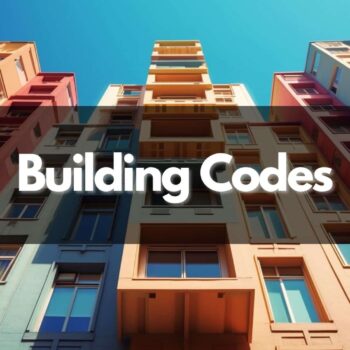Alternative financing options are always helpful for real estate investments. Most conventional loans come with strict requirements and take a long time to process and approve. In such situations, having a wide variety of financing options can help investors to meet their funding needs.
When marketing conditions aren’t favorable, for instance, when the interest rates are high and there are no buyers, homeowners can benefit from wrap-around loans. In this post, I’ll define and explain wrap-around loans with the help of examples.
What Is a Wrap-Around Loan?
A wrap-around loan is a new loan that wraps around the seller’s original loan. It is a secondary financing option in which a seller provides the loan instead of a bank or credit union. These loans can be used in owner-financing contracts and are mostly used as mortgages.
Wrap-around mortgages include the home mortgage of the seller and an additional amount that acts as a security interest. This helps the property seller pay the outstanding mortgage with the help of the new loan from the buyer. Instead of taking a loan from a traditional bank, the buyer agrees with the seller for a new loan, and the seller uses this loan to pay off the first mortgage.
How Does a Wrap-Around Loan Work?
If a seller or homeowner wants to offer a wrap-around loan, they’ll first have to make sure whether the home loan is assumable. For instance, conventional loans or mortgages are not assumable, but FHA, USDA, and VA loans are. An assumable loan or mortgage is one in which the buyer assumes or takes the same terms as the seller’s outstanding mortgage. If the mortgage is assumable, the following are the steps in which a wrap-around loan works:
- The seller should take permission from the lender to proceed with the wrap-around loan.
- The buyer and seller agree to the wrap-around loan agreement and come up with an interest rate, loan amount, and down payment.
- Buyer and seller sign a promissory note that states the rates and terms of the wrap-around loan.
- The seller keeps the outstanding mortgage on the home and transfers the ownership to the buyer after the agreement or after the loan is repaid.
- The home buyer gives monthly payments to the seller, and with the help of this loan amount, he repays the original loan.
Benefits and Risks of Wrap-Around Loans
The benefits and risks of wrap-around loans differ from the buyer’s and seller’s points of view.
Benefits
From the buyer’s point of view:
- Getting a mortgage is difficult if the buyer has a low credit score. However, it is easier to qualify for a wrap-around mortgage and get better terms.
- A wrap-around mortgage allows the buyer to have a lower loan balance. The amount borrowed as a loan is enough to pay for the outstanding loan and also a small profit for the seller.
From the seller’s point of view:
- Sellers profit by charging a higher interest rate than the one they have on their existing mortgage. This can help them earn a monthly profit.
- It is suitable for sellers who are looking for a flexible and easy qualification way to repay their existing mortgage.
Risks
From the buyer’s point of view:
- The buyer has to pay higher interest rates because these loans are more expensive than traditional loans.
- In this agreement, the buyer pays the monthly payments to the seller, and the seller repays the loan amount to the existing mortgage lender. However, if the seller defaults, the lender may force the buyer to sell the property to pay the remaining loan amount.
- Sometimes the seller may agree to a wrap-around mortgage without the lender’s consent. This can result in a breach of contract, and the lender can demand repayment.
From the seller’s point of view:
- If the buyer defaults, the seller can also face risk. In this case, the seller must make up for the missed payments or the remaining loan amount.
Is a Wrap-Around Loan a Good Idea?
A wrap-around loan is more complicated than other loans, particularly because the new loan wraps around the original loan. However, in some cases, when the seller and the buyer have no other option to qualify for a loan, a wrap-around loan can help. This may be the case when the seller has to sell the home due to an emergency, and there’s no buyer. Plus, the outstanding balance on the mortgage is also an issue.
Since risk is involved on both sides, the interest rates are higher. The seller will have to give a loan to the buyer in spite of bad credit; thus, he charges more interest rate from the buyer. If the buyer pays regularly, the seller will benefit from the difference in the interest rate payments. However, if the buyer defaults on the loan, the risk will be on the seller. Thus, a wrap-around loan is often the last option to buy or sell a property.
Wrap-Around Mortgage Vs. Second Mortgage
Both wrap-around and second mortgages are types of subordinate mortgages created while the original or first mortgage is still in effect. In both cases, the interest rate is higher than the original mortgage, and the amount borrowed is lower.
| Wrap-Around Mortgage | Second Mortgage | |
| Loan Amount | The original loan amount plus an additional amount | New loan apart from the original mortgage |
| Uses | Seller financing | Homeowners for accessing their equity |
| Lenders | Not offered by financing institutions | Offered by financing institutions in the form of HELOC or home equity loans |
Wrap-Around Loan Examples
Example 1: Suppose person-A owns a house with an outstanding mortgage of $100,000 with a 5% interest rate. Person-A sells the home for $150,000 to person B, but since there is still an outstanding mortgage, he has to pay it too. The following are the details of this loan:
- Outstanding mortgage: $100,000 at a 5% interest rate
- Home selling price: $150,000
Now, person B takes a new loan to pay the outstanding loan. Person B pays a 10% down payment and takes a 7% interest rate loan to pay the remaining amount.
- Down payment: $15000
- Remainder amount: $150,000 – $15,000 = $135,000
- Person-A earns: $135,000 – $100,000 = $35,000
Person-A earns $35,000, the difference between the remaining amount after the down payment and the outstanding mortgage. Person-A also earns from the difference between the interest rates, that is, 7% and 5%, which equals 2% on the balance of a $100,000 mortgage.
Example 2: David wants to sell his property worth $350,000 because he doesn’t have enough funds to pay the remaining loan amount. The outstanding balance on his mortgage is $45,000 with a 4.5% fixed interest rate. He discusses this with his lender, who allows him to take a wrap-around mortgage on the existing mortgage. Later, he was able to locate a buyer, Mary, willing to pay $350,000 for his property.
David wraps Mary’s loan into the existing mortgage. However, Mary still doesn’t have the total amount, so she puts down $30,000 and decides to take $320,000 from the seller as a wrap-around loan with an agreement at a rate of 6%. After David and Mary signed the deal, David transferred the property’s ownership to Mary. She pays David a monthly amount as agreed, and he uses this money to pay back the outstanding balance on his senior mortgage. So Mary takes out a loan at a higher interest rate, and David profits from the wrap-around agreement.
Frequently Asked Questions
Are Wrap-Around Loans Legal?
Wrap-around loans are legal but not very commonly used in real estate. One of the main reasons is that there is ‘due on sale ‘in the loan agreements. The ‘due on sale’ clause makes the buyer pay the entire loan balance when the property is sold. This makes it more complex as there are many factors to consider. Some borrowers take a second mortgage instead of a wrap-around loan for these reasons.
What are the Alternatives to Wrap-Around Mortgages?
Buyers normally look for wrap-around mortgages when they find it difficult to qualify for standard home mortgages or get reasonable loan terms. But since there are risks involved, the borrowers must look for other alternatives. For instance, government-backed loans like FHA, USDA, and VA loans make home-buying more affordable. Besides that, the borrower can also consider delaying home purchases for a few months and improve their creditworthiness and financial standing. Plus, there are down payment assistance programs that will help if the buyer is having trouble paying a down payment.
How to Get a Wrap-Around Mortgage?
Buyers can directly ask the sellers if wrap-around mortgage options are available. Since it’s a non-traditional financing method, the buyer doesn’t have to contact a financial institution to get a wrap-around loan or mortgage. The seller of the property will offer this loan, and the eligibility requirements will also vary from seller to seller.
What is a Wrap-Around Loan Calculator?
A wrap-around mortgage calculator allows buyers and sellers to calculate the details of a wrap-around loan. However, these financial tools are helpful if you already know all the input values and just need a calculation. A real estate agent or loan officer can help make a better decision regarding wrap-around loans.
Can you Refinance a Wrap-Around Loan?
A wrap-around loan or mortgage is used to refinance a property. For this reason, these loans are called subordinate or junior loans too. These loans include a current note on the home and a new loan to cover the selling price of the home. With a wrap-around mortgage, the lender receives the mortgage payment from the seller, who has made a wrap-around loan agreement with a buyer. The seller receives the profit margin, and the buyer gets the ownership of the property. You cannot refinance a wrap-around loan; in fact, it is used to refinance a property.
Who Holds Title in a Wrap-Around Mortgage?
A wrap-around loan includes a promissory note in which the buyer and seller agree to a certain loan amount, down payment, and other terms. Now the terms and conditions of the loan agreement may vary. The seller can choose to transfer the title to the buyer right away after the loan agreement and receive monthly payments to pay back the outstanding loan. This way, title of the home in a wrap-around mortgage will belong to the buyer. On the other hand, the seller may also decide to keep the title during the loan term, and once the mortgage matures, he can transfer title to the buyer.
Either way, the title goes to the buyer as he is purchasing the property. However, in case of default from the buyer’s side, the seller will hold title, and he’ll have to pay the outstanding mortgage to the lender from his pocket. If the seller defaults on the loan, the buyer will have to pay the outstanding mortgage to the lender if he has the title. There are many complexities attached to this type of agreement because, in case of default, title goes to the lender as the property acts as collateral for the loan.
What to Know for the Real Estate Exam
A wrap-around loan or mortgage offers an attractive way for the buyer and seller to make transactions. However, there are risks involved on both sides of the transaction. Wrap-around loans hold more risks for sellers as they have to pay the remaining loan amount if the buyer defaults on the loan. These loans are also called junior loans or second mortgages that allow investors to sell or purchase properties without going through the formalities of traditional banking. In short, it is a non-traditional financing method that allows the seller to pay their outstanding loans while wrapping another loan around it. To prepare for a real estate exam, you must learn more about Real Estate Terms through our flashcard app.











